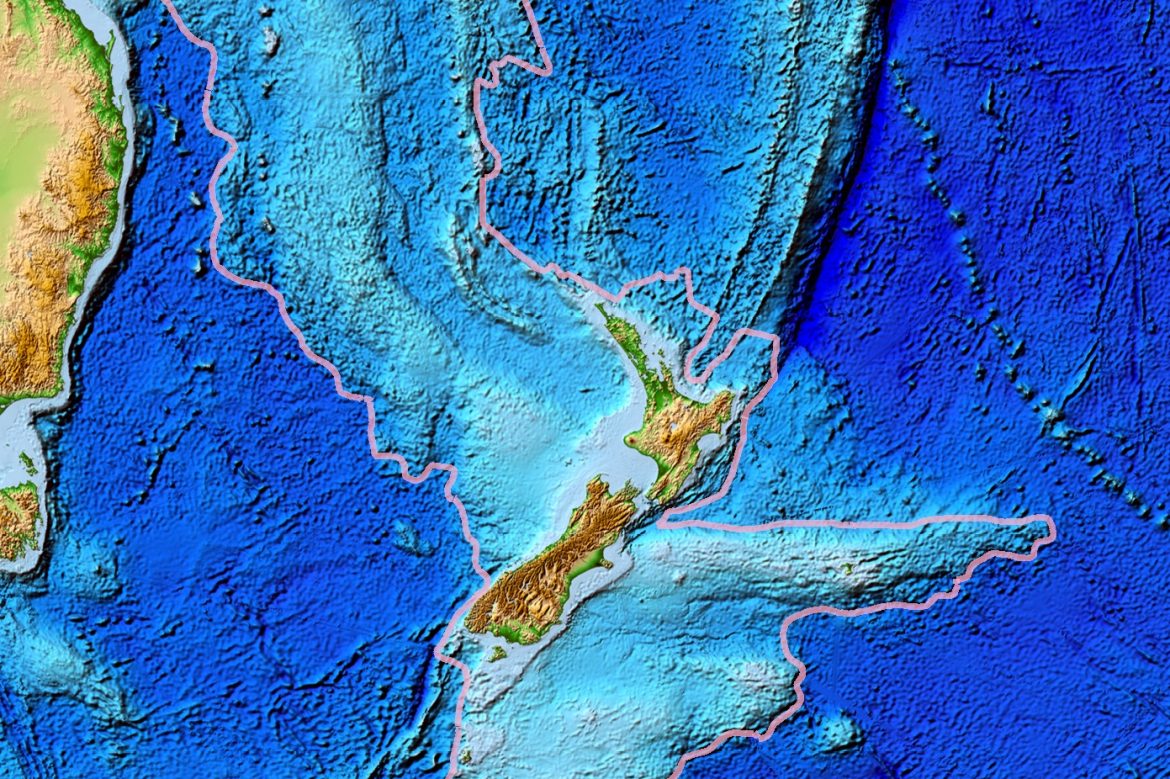
Chasing The Eight Continent
Geologists have successfully completed the mapping of Zealandia, a massive, mostly submerged landmass in the Pacific Ocean recently confirmed to exist, and referred to as the “Earth’s eighth continent” by many researchers.
Zealandia is situated southeast of Australia, stretching from New Zealand in the south to New Caledonia in the north. These two island nations are the only visible parts of Zealandia above sea level. The remaining 94 per cent of the continent lies beneath the waters of the Pacific Ocean. The proposition that this landmass could be a distinct continent was initially suggested in 2017. The idea was based on decades of research indicating that its continental crust is distinct from that of Australia. Previously, it had been regarded as part of the Australian tectonic plate. However, extensive geological studies revealed its unique nature, making it event that this notion should be reassessed. Researchers conducted satellite-based surveys between 2020 and 2023, resulting in a spectacular underwater silhouette of Zealandia.
Isolated in the southern hemisphere, Zealandia covers an area of about 4.9 million square kilometres. This is equivalent to approximately 6 per cent of the Earth’s total land surface (for comparison, Australia comprises about 5 per cent). This substantial size led geologists to classify it as a “continent” rather than a microcontinent or a continental fragment.
The continent’s origins can be traced back to the breakup of the supercontinent Gondwana, which occurred approximately 85 million years ago. Likely as a consequence of this significant geological event, Zealandia became isolated and began to sink due to its lower density compared to the surrounding oceanic plates. By around 23 million years ago, the continent was predominantly submerged, with only a few islands visible above the water.
The completion of Zealandia’s mapping in 2023 has provided unprecedented insights into this submerged world. The continent comprises two nearly parallel ridges, separated by a failed rift, with peaks occasionally breaching the ocean’s surface to form islands. The most prominent of these islands include New Zealand and New Caledonia, along with smaller islands such as the Lord Howe Island Group and Norfolk Island.
Through the analysis and dating of rock samples extracted from the seabed for geological mapping studies, researchers were able to gain insight into the undersea geology of Zealandia, particularly in the lesser-known northern regions. These studies offered clearer information not only regarding the formation of the continent but also concerning its dynamic geological history, characterised by intense volcanism and shifts along major fault lines. Based on this data, it is even suggested that Zealandia may have played a significant role in the formation of the volcanic Ring of Fire in the Pacific Ocean.
A New Chapter in Earth’s Geological History
The mapping of Zealandia represents a significant milestone in our quest to comprehend the geology of our planet. It underscores the dynamic and ever-changing nature of Earth even more vividly. It enhances our understanding of Earth’s geological past and present by challenging our preconceptions of what constitutes a continent and even the criteria under which a landmass qualifies as “a continent”.
As the scientific community continues to explore and uncover the secrets of this submerged continent, we will gain fresh insights into the geological processes that have shaped our world and the enigmas concealed beneath the ocean’s depths. Zealandia is thus poised to remain a focal point of research for years to come, and we will eagerly be waiting for exciting new discoveries.
REFERENCES
- 1. https://www.ecoticias.com/en/sunken-continent-zealandia/1501/
- 2. https://www.popularmechanics.com/science/environment/a45226285/eighth-continent-zealandia-mapped/
- 3. https://agupubs.onlinelibrary.wiley.com/doi/10.1029/2023TC007961
- 4. https://www.livescience.com/zealandia-tied-to-ring-of-fire.html
